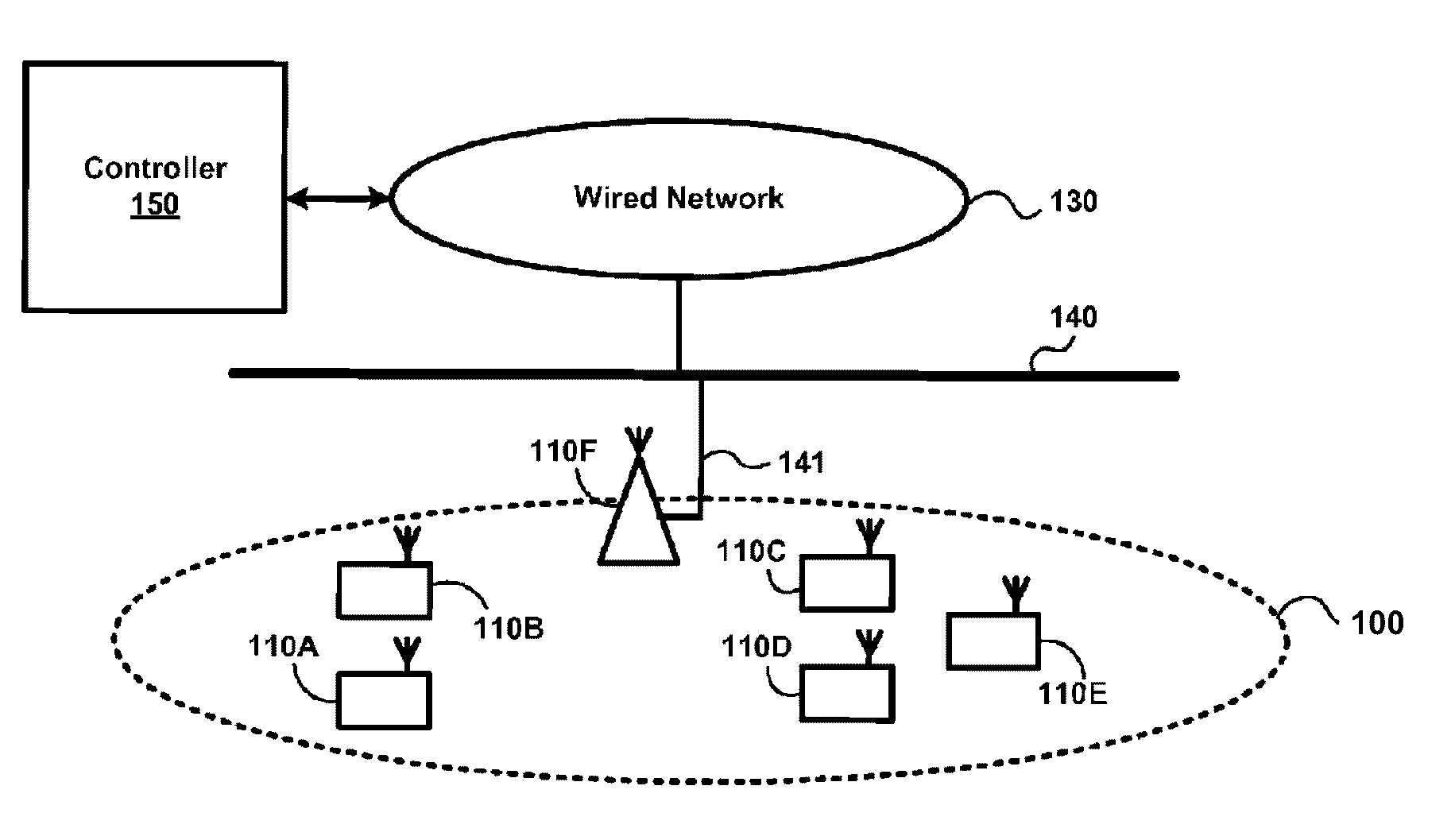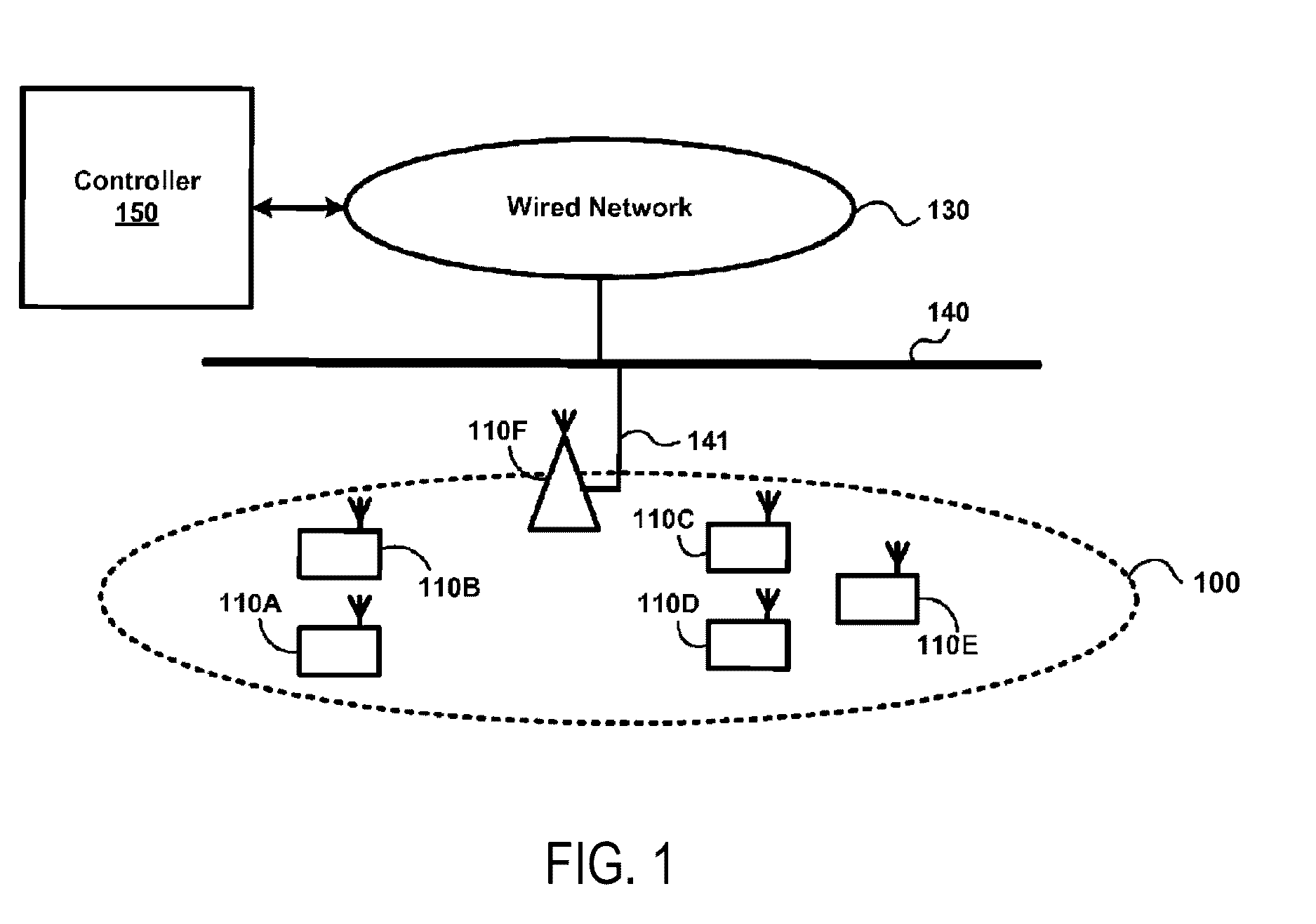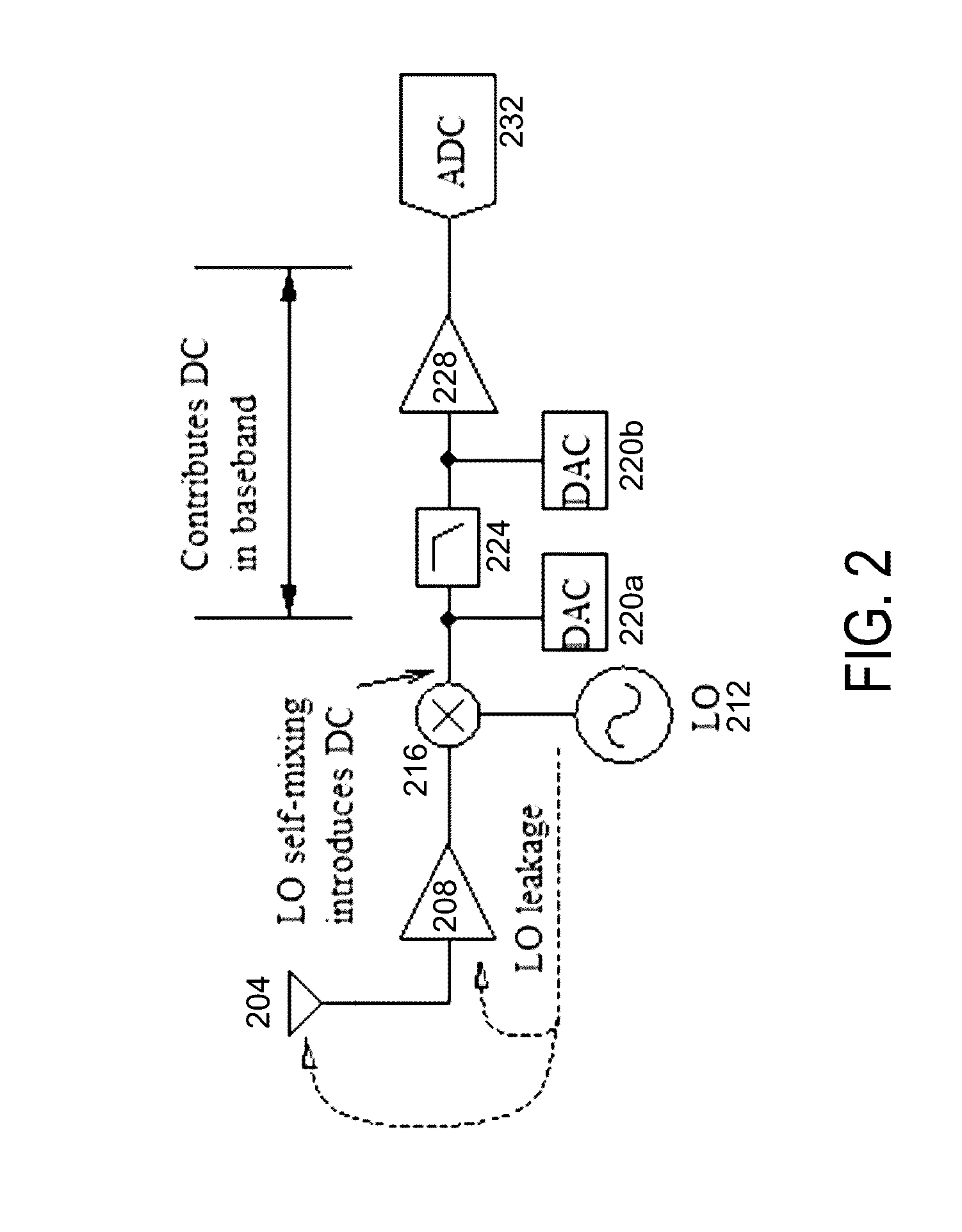Semi-close loop DC offset compensation technique
a compensation technique and semi-close loop technology, applied in the field of semi-close loop dc offset compensation technique, can solve the problems of dc offset being undesirable, being exposed to interference from other transmitters, microwave ovens, other appliances, etc., and achieve accurate calibration, time saving, and accuracy.
- Summary
- Abstract
- Description
- Claims
- Application Information
AI Technical Summary
Benefits of technology
Problems solved by technology
Method used
Image
Examples
Embodiment Construction
[0021]FIG. 1 illustrates an exemplary network including both wired and wireless components. It will be appreciated that the network shown in FIG. 1 and described herein is exemplary and fewer or additional components may be included in the network and other variations may be made to the exemplary network are contemplated. In addition, although certain features of the network are described with reference to a network consistent with the IEEE 802.11 standards; it will be appreciated that the invention may be implemented in networks operating with other wireless network standards, such as, for example, HIPERLAN, IEEE 802.16, Bluetooth, cellular technologies, such as CDMA, WCDMA, LTE, etc., and others, or other non-standards-based wireless networks.
[0022]The network 100 illustrated in FIG. 1A includes clients 110A-110E, access point (AP) 110F, wired network 130, wired network backbone 140 and wireless network manager 150. Client 110 represents a basic service set (BSS) consistent with t...
PUM
 Login to View More
Login to View More Abstract
Description
Claims
Application Information
 Login to View More
Login to View More - R&D
- Intellectual Property
- Life Sciences
- Materials
- Tech Scout
- Unparalleled Data Quality
- Higher Quality Content
- 60% Fewer Hallucinations
Browse by: Latest US Patents, China's latest patents, Technical Efficacy Thesaurus, Application Domain, Technology Topic, Popular Technical Reports.
© 2025 PatSnap. All rights reserved.Legal|Privacy policy|Modern Slavery Act Transparency Statement|Sitemap|About US| Contact US: help@patsnap.com



